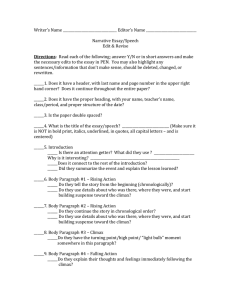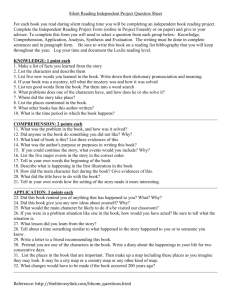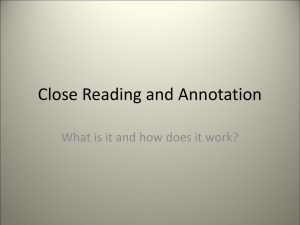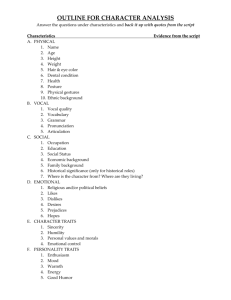Vocabulary for text analysis and text production
advertisement
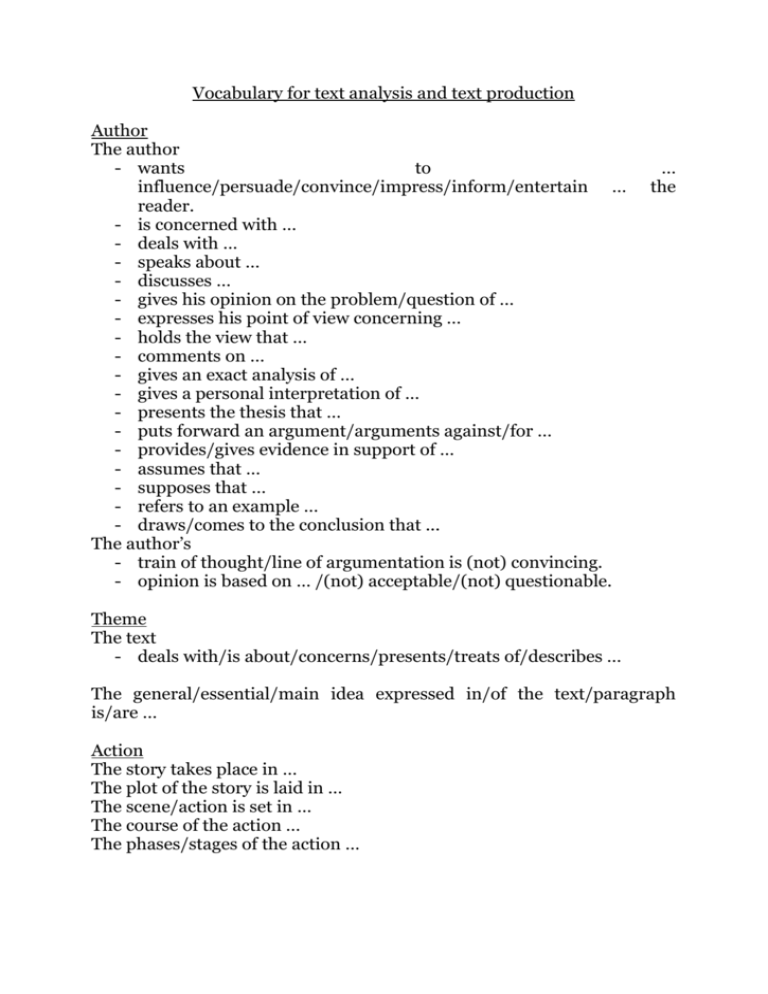
Vocabulary for text analysis and text production Author The author - wants to influence/persuade/convince/impress/inform/entertain … reader. - is concerned with … - deals with … - speaks about … - discusses … - gives his opinion on the problem/question of … - expresses his point of view concerning … - holds the view that … - comments on … - gives an exact analysis of … - gives a personal interpretation of … - presents the thesis that … - puts forward an argument/arguments against/for … - provides/gives evidence in support of … - assumes that … - supposes that … - refers to an example … - draws/comes to the conclusion that ... The author’s - train of thought/line of argumentation is (not) convincing. - opinion is based on … /(not) acceptable/(not) questionable. … the Theme The text - deals with/is about/concerns/presents/treats of/describes … The general/essential/main idea expressed in/of the text/paragraph is/are … Action The story takes place in … The plot of the story is laid in … The scene/action is set in … The course of the action … The phases/stages of the action … Structure The text/story can be divided into/is divided into/falls into/is composed of/contains/consists of […] parts/paragraphs/chapters/sections. The paragraph can be subdivided … The subdivision indicates the sequence of ideas … The constituent elements of the … are … The first/[…]/last part/paragraph/chapter/sentence constitutes/gives us/comprises the introduction/central problem/principal part/solution. In the first/[…]/last part/chapter the author varies the theme/changes the topic/goes into detail/passes from … to … The tension arises from/emerges in … The scene/dialogue/passage is the climax of the story/play. The climax/turning point is reached when/comes … The story/play has an open ending. Atmosphere The atmosphere of the melancholy/gloomy/shown in/by … text/passage/story/play Style: The author uses/employs/makes literary/formal/informal/colloquial/familiar/slang words/expressions/language. This word/expression/phrase to/underlines/emphasises/means/stands for … use is of refers Characterisation The author describes the characteristics/outer appearance/intellectual qualities/mood/activities/social and psychological condition of … The author points out the characteristics of/gives a characterisation of/characterises (a person as…)/gives a realistic/detailed description of/only gives a rough description of… The character is described/presented/characterised as… The basic traits of A’s character are … One of A’s striking characteristics is … A stands in clear contrast to B.
